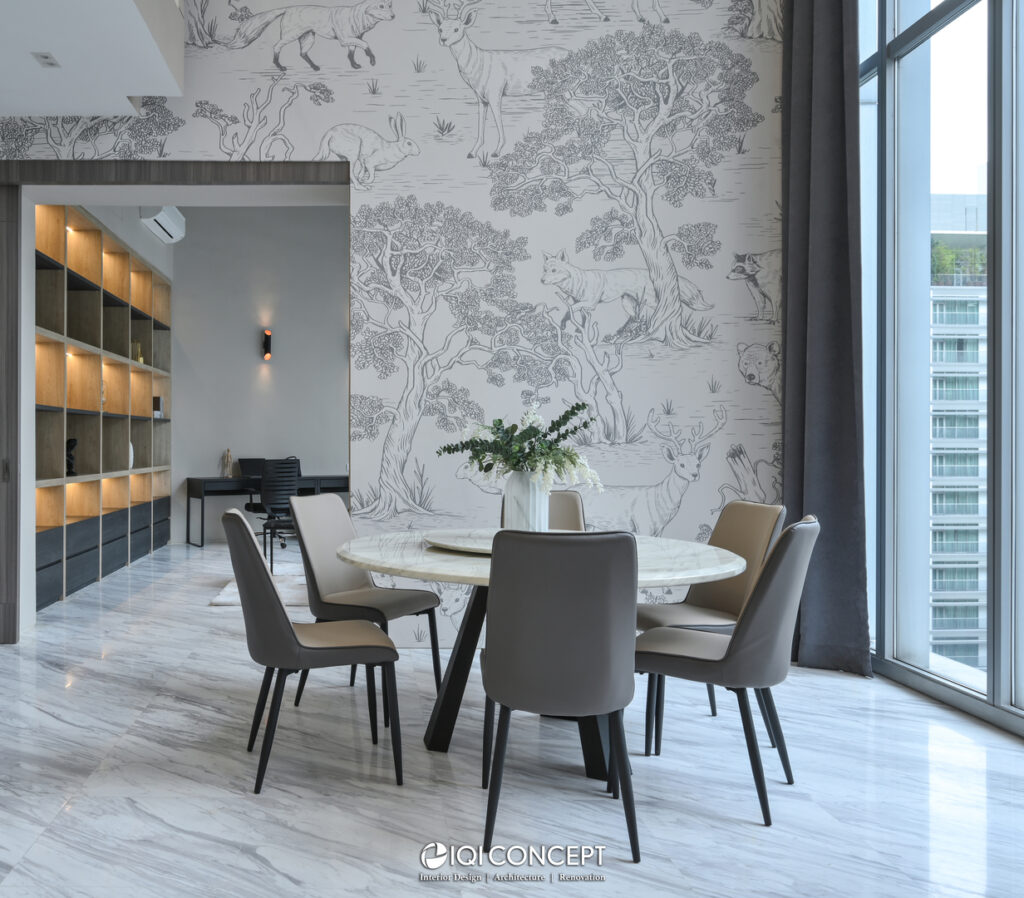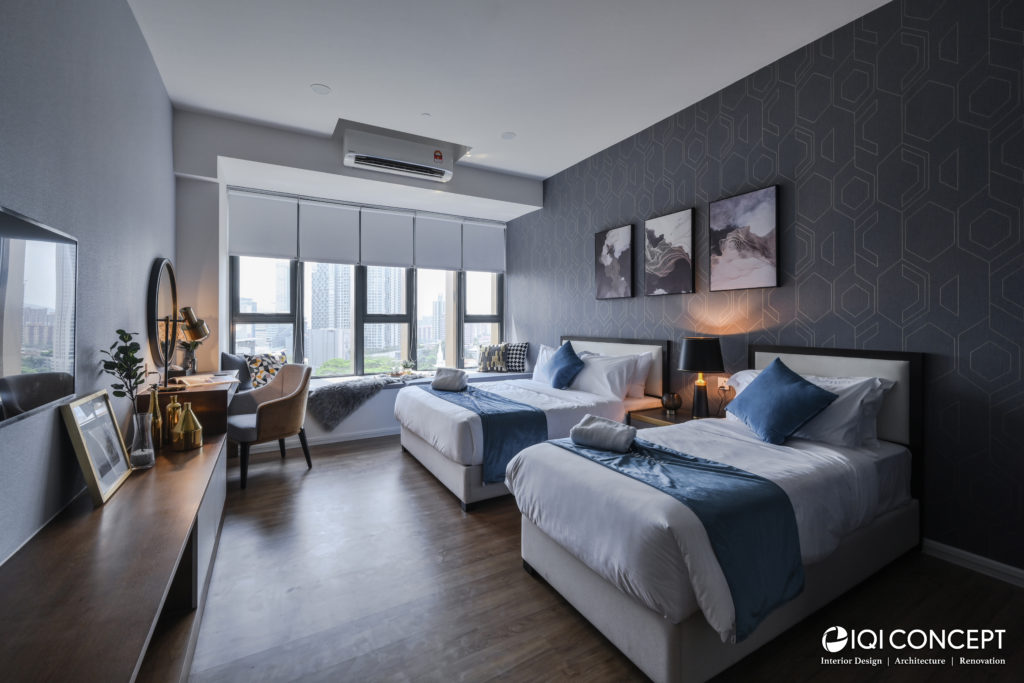Mixing and Matching Wallpaper Patterns for a Cohesive Look
Wallpaper has experienced a remarkable resurgence in recent years, emerging as a versatile and dynamic way to infuse personality and style into your home. One of the most exciting aspects of modern wallpaper design is the ability to mix and match patterns to create a cohesive and visually engaging look. While this approach might seem daunting at first, mastering the art of pattern mixing can lead to stunning results that elevate your interior design. In this guide, we’ll explore tips and strategies for mixing and matching wallpaper patterns to achieve a harmonious and stylish space.
1. Understanding the Basics of Pattern Mixing
Before diving into the specifics, it’s essential to grasp some fundamental principles of pattern mixing:
- Scale Matters: Mixing patterns of different scales—large and small—can create a balanced and visually interesting design. For example, pair a bold, large-scale pattern with a more subtle, smaller-scale one to avoid overwhelming the space.
- Color Coordination: Ensure that the color palette of your chosen patterns complements each other. Patterns don’t need to match perfectly, but they should share common hues or tones to maintain cohesion.
- Theme Consistency: While mixing patterns, keep the overall theme or style of the room consistent. Whether you’re going for a contemporary, traditional, or eclectic look, make sure the patterns align with the chosen aesthetic.
2. Start with a Statement Wallpaper
When mixing patterns, it’s often effective to begin with a statement wallpaper. This is a bold, eye-catching pattern that will serve as the focal point of the room. Here’s how to integrate a statement wallpaper into your design:
- Feature Wall: Use the statement wallpaper on a single feature wall to create a dramatic focal point. This approach allows the bold pattern to stand out without overwhelming the space.
- Accent Details: Incorporate the statement pattern in smaller accents, such as on a ceiling or a section of a wall, to introduce a touch of drama without dominating the room.

3. Pairing Patterns with Different Scales
Combining patterns of various scales is a key strategy for achieving a cohesive look:
- Large and Small Patterns: Pair a large, dramatic pattern with a smaller, more delicate one. For instance, a large floral print can be balanced with a small geometric design.
- Striped and Textured Patterns: Stripes and textures offer a different scale of pattern that can complement more intricate designs. For example, a striped wallpaper can act as a subtle background to a more elaborate pattern.
4. Creating a Color Palette
A cohesive color palette is crucial for successful pattern mixing. Follow these guidelines to create harmony:
- Shared Colors: Select patterns that share a common color or set of colors. This creates a visual connection between the different patterns and ensures they work together.
- Accent Colors: Introduce accent colors that complement the primary patterns. These can be used in accessories like cushions, curtains, or rugs to tie the room together.
5. Mixing Patterns by Room Zones
To achieve a cohesive look, consider how different patterns will interact within specific zones of a room:
- Room Divisions: In open-plan spaces, use different patterns for distinct areas to create a sense of separation while maintaining harmony. For instance, a bold pattern in the dining area can be balanced with a subtler design in the living area.
- Transitional Spaces: In transitional areas, such as hallways or corridors, opt for patterns that bridge the gap between different rooms. A transitional pattern can create a smooth flow between spaces with varying designs.
6. Incorporating Patterned Accents
Introduce patterned accents to complement your main wallpapers and add depth to your design:
- Trims and Borders: Use wallpaper trims or borders to frame or separate patterns. This technique can create a polished look and prevent patterns from clashing.
- Accessories: Incorporate patterned accessories, such as cushions, rugs, or curtains, that echo the colors or themes of your wallpaper patterns. This helps to unify the overall design.

7. Testing Samples
Before committing to a design, it’s essential to test wallpaper samples:
- Sample Boards: Create sample boards with your chosen patterns and colors to visualize how they will work together in the space. This allows you to see the patterns side by side and make adjustments if necessary.
- Room Proportions: Consider how patterns will look in different proportions and lighting conditions. A pattern that appears cohesive in a sample board might look different when applied to a full wall.
8. Seeking Professional Advice
If you’re unsure about mixing and matching patterns, seeking professional advice can be beneficial:
- Interior Designers: Interior designers have expertise in pattern mixing and can offer valuable guidance on achieving a cohesive look.
- Wallpaper Specialists: Consult wallpaper specialists for recommendations on patterns and color combinations that work well together.
9. Embracing Personal Style
Ultimately, the most successful pattern mixing reflects your personal style and preferences:
- Experiment Freely: Don’t be afraid to experiment with different patterns and combinations. Trust your instincts and choose patterns that resonate with your style.
- Personal Touches: Incorporate elements that reflect your personality and interests. This ensures that the design feels authentic and uniquely yours.
10. Maintaining Balance
While mixing patterns, aim for a sense of balance and harmony:
- Visual Rest: Allow for areas of visual rest, such as plain walls or neutral accents, to prevent the design from becoming overwhelming.
- Proportion and Scale: Ensure that patterns are balanced in terms of proportion and scale to maintain a cohesive and visually pleasing design.
Conclusion
Mixing and matching wallpaper patterns is an art that, when done thoughtfully, can transform your home into a stylish and personalized space. By understanding the principles of pattern mixing, creating a cohesive color palette, and embracing your personal style, you can achieve a design that is both visually engaging and harmonious. With careful planning and a creative approach, you can turn your walls into a canvas of dynamic patterns that enhance the beauty and character of your home.
Ready to transform your home? Click here to schedule a free consultation with us today and let’s turn your dream home into a reality!

Follow our socials to get the latest updates or WhatsApp us to get to know about our services!